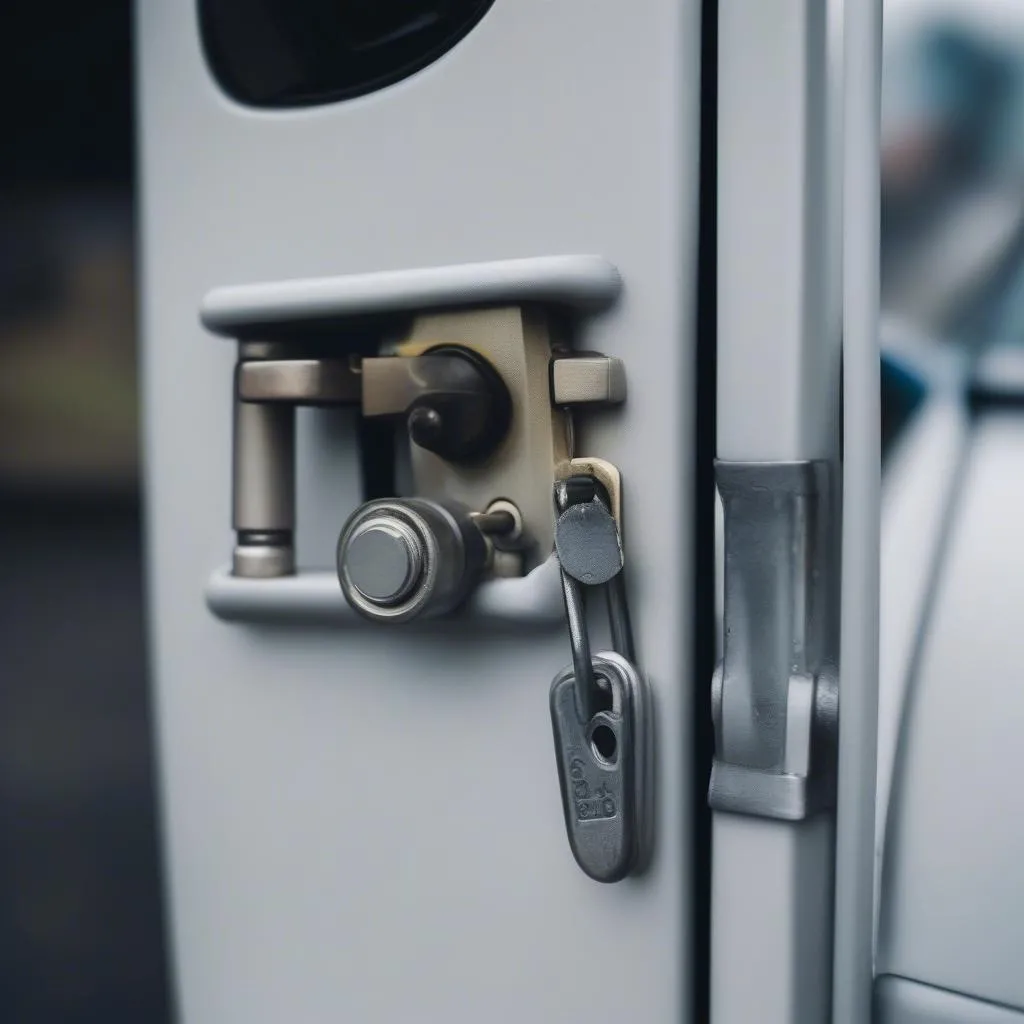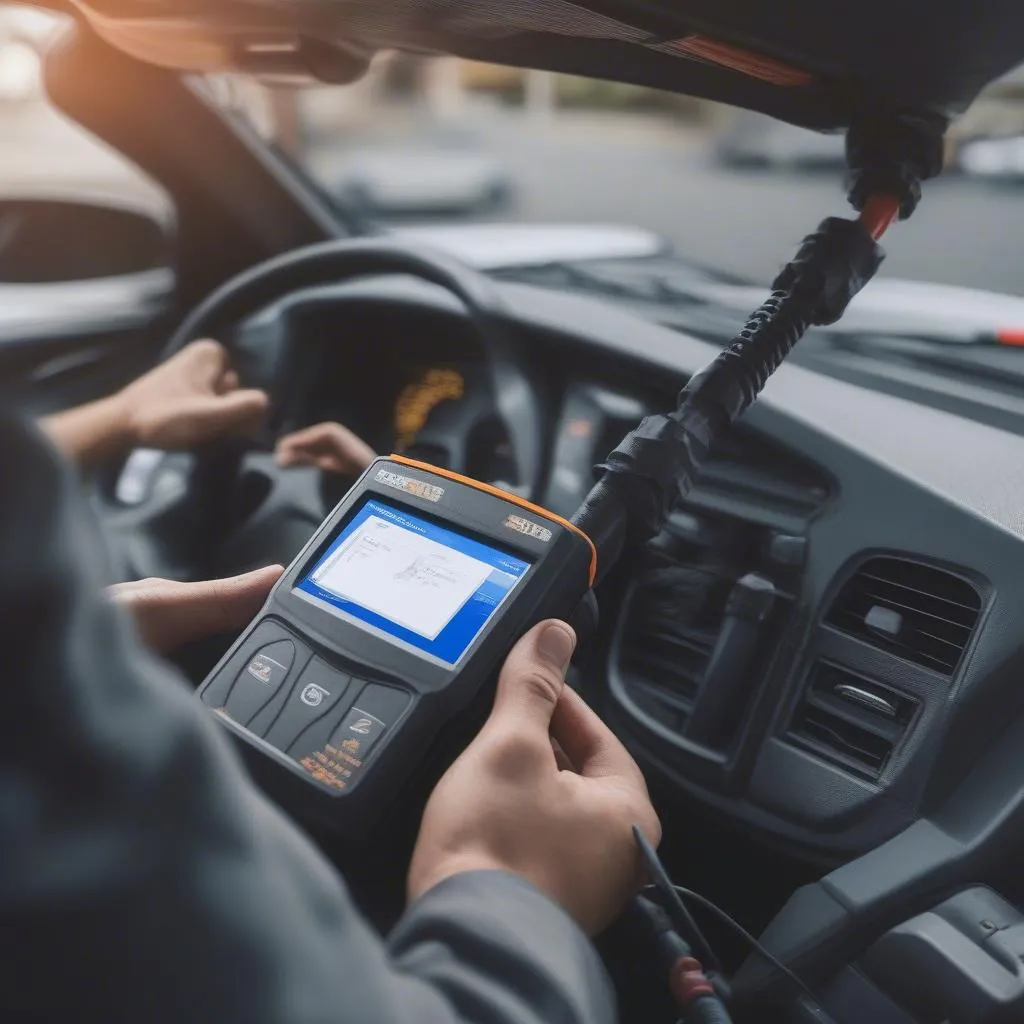Car theft is an unfortunate reality, and even vehicles equipped with anti-theft systems aren’t entirely immune. While these systems have significantly deterred traditional theft methods, tech-savvy thieves have adapted, discovering new ways to bypass security measures. If you’re wondering, “How do thieves unlock car doors with anti-theft systems?” this article provides a detailed look into their tactics and what you can do to protect your vehicle.
Common Methods Used to Bypass Anti-Theft Systems
Thieves employ various methods, often combining traditional techniques with technological exploits:
1. Relay Attacks: This sophisticated technique targets keyless entry systems. Using devices that amplify and relay the signal from your key fob, thieves can unlock and even start your car remotely, even if the key is inside your house.
2. Code Grabbing: Thieves utilize devices called “code grabbers” to intercept the signal sent from your key fob to the car when locking or unlocking. They can then use this captured code to gain access later.
3. OBD-II Port Manipulation: The OBD-II port, often found under the dashboard, is a gateway to your car’s computer system. Thieves can use this port to program a new key or disable the immobilizer, effectively bypassing the anti-theft system.
4. Signal Jamming: Thieves may use a jammer to block the signal from your key fob, preventing you from locking your car. This allows them to easily access your vehicle while you are away.
5. Slim Jim and Other Forced Entry Tools: While seemingly low-tech, these tools can still be effective. Thieves use slim jims and similar tools to manipulate the door lock mechanism, forcing entry.
 Car door lock
Car door lock
Recognizing the Signs of Attempted Theft
While not always obvious, there are a few telltale signs that might indicate someone has tampered with your vehicle:
- Scratches or pry marks near the door handles or lock cylinders.
- Damaged steering column or ignition switch, indicating a forced entry attempt.
- Electrical issues such as malfunctioning lights or a drained battery, suggesting tampering with the electrical system.
If you notice any of these signs, it’s crucial to contact your local authorities and have your vehicle inspected by a qualified automotive technician.
Essential Tools for Diagnosing and Addressing Car Theft Attempts
Automotive technology is rapidly evolving, and staying ahead of potential threats often requires specialized tools:
-
Diagnostic Scanners: These tools can read and interpret your vehicle’s diagnostic trouble codes (DTCs), revealing potential issues within the anti-theft system or other electronic components. Cardiagtech offers a range of high-quality diagnostic scanners [link to relevant product page] suitable for both professionals and car enthusiasts.
-
Immobilizer Programming Tools: These specialized devices can program new keys or reprogram existing ones, often necessary after a theft attempt or if you’ve lost your keys.
 Car Diagnostic Scanner
Car Diagnostic Scanner
Protective Measures to Enhance Your Car’s Security
Beyond factory-installed anti-theft systems, consider these additional layers of protection:
-
Steering Wheel Locks: A visible deterrent, these mechanical devices make it physically difficult to steer the car, even if the ignition is compromised.
-
Faraday Pouches: These pouches block electromagnetic signals, preventing thieves from capturing your key fob’s signal for relay attacks.
-
GPS Trackers: In the unfortunate event of theft, GPS trackers can help authorities locate your vehicle quickly.
-
Immobilizer and Alarm System Upgrades: Consult a trusted automotive technician to explore options for upgrading your car’s existing anti-theft system.
Frequently Asked Questions about Car Anti-Theft Systems
Q: Can a car alarm stop a thief?
A: While car alarms can deter opportunistic thieves, determined individuals may find ways to disable them. However, an alarm coupled with a robust immobilizer system offers enhanced protection.
Q: Does my key fob have a unique code?
A: Yes, modern key fobs use rolling codes, meaning the code transmitted changes with each use, making it extremely difficult for thieves to duplicate.
Q: What are some common vulnerabilities in older cars that make them easier to steal?
A: Older cars often lack the sophisticated immobilizer systems and advanced electronics found in newer models, making them more susceptible to traditional theft methods. If you own an older car, consider consulting with a trusted mechanic about potential security upgrades. For more information on how anti-theft devices work in cars, you can check out this comprehensive guide: [Link to https://cardiagtech.com/how-anti-theft-device-works-in-car/].
Conclusion
Understanding how thieves operate is crucial in safeguarding your vehicle. By staying informed about common theft methods and investing in additional security measures, you can significantly reduce the risk of becoming a victim. For expert advice and assistance with enhancing your car’s security, don’t hesitate to contact CARDIAGTECH. Our team of experienced technicians is dedicated to providing top-notch automotive solutions tailored to your specific needs.

